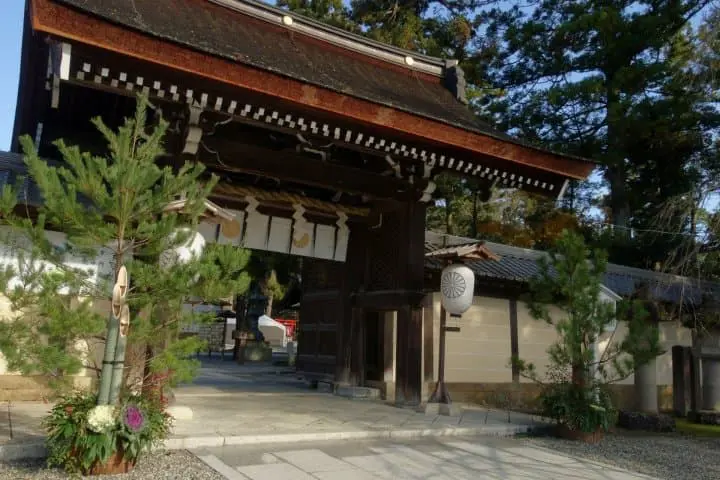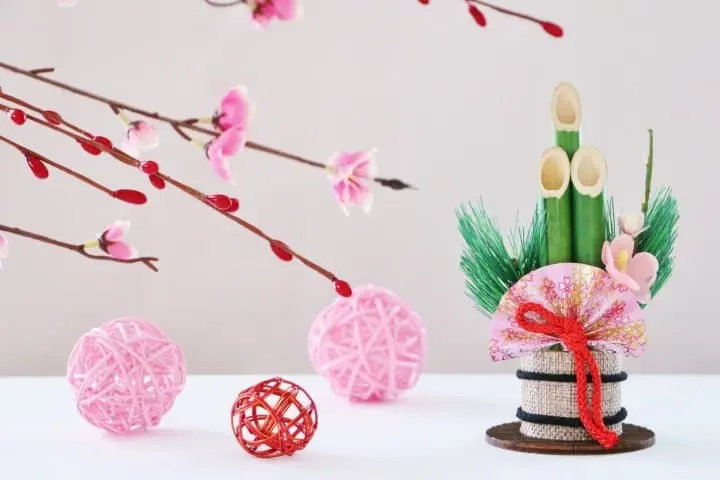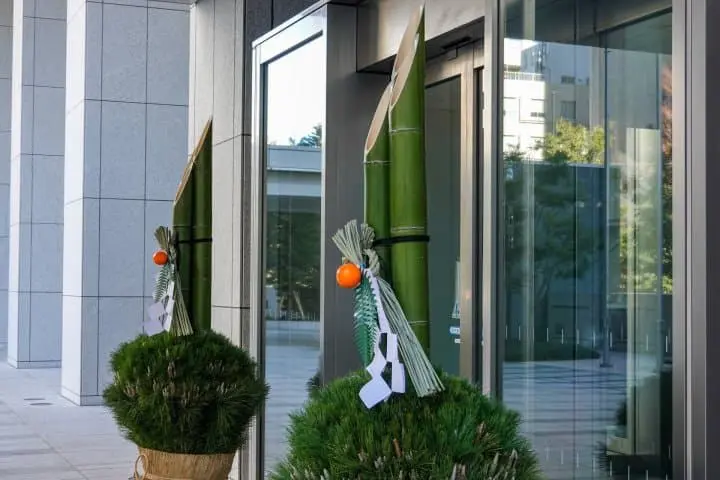Kadomatsu: Traditional Japanese New Year Decorations and Symbolism

Kadomatsu are an integral part of the Japanese New Year’s celebrations. These bamboo and pine decorations come in various sizes and are found outside shops and businesses across Japan.
Kadomatsu - New Year's Decorations

Kadomatsu are paired bamboo and pine decorations that are set to the left and right of the entrance ways of a building in order to invite the god of the New Year (Toshigamisama) to bless that location for the coming year.
The Origin of Kadomatsu

It is believed that kadomatsu first became a custom in China during the 7th century and were brought to Japan just after the 8th century. Documents from that era make mention of decorations made from pine and other related materials.
However, kadomatsu that include bamboo and pine, similar to the common style displayed today, did not appear until about the 14th century. Both pine and bamboo are plants representing longevity in Japan, making them ideal as decorations and symbols of long life in the new year.

Although they may differ from region to region, the basic foundation of the kadomatsu features three or five stalks of bamboo cut on the diagonal in different lengths standing vertically with pine branches arranged around them.
Two notable differences can be found between the Kanto and Kansai regions; Kanto places emphasis on the upright straightness of the bamboo, while Kansai focuses more on the vividness of the pine branches.
Dondoyaki - Ceremonial Burning of Kadomatsu Decorations

Photo by Pixta
From December 26 onward, (excluding the 29 and 31 for symbolic reasons), kadomatsu are placed in front of the entrance ways of most buildings all across Japan. But come January 15, an event known as Dondoyaki takes place, wherein kadomatsu and other New Year’s decorations are ritualistically burned.
Taking place within the grounds of a shrine, on a schoolyard or in any wide open space, the kadomatsu and other decorations are stacked up in a pyramid-like shape and are set on fire. Mochi rice cakes are then roasted on this fire, and it is believed that if you eat these mochi, you will stay healthy in the new year.
ライター兼翻訳者、時にマーケティング調査員の顔も。訪日旅行客向けに東京都内レストランメニューの翻訳データ・ベースの作成や、宿・ホテル情報検索サイトの翻訳も手掛けてきました。旅行と食材研究が趣味です。






































![[Coupon Available] Attention Overseas Winter Sports Fans! Nagano's Sports Depot Has Evolved](https://resources.matcha-jp.com/resize/720x2000/2026/01/05-254819.webp)
![[2 hours from Tokyo ] 10 Quiet and Breathtaking Views of Mount Fuji in Yamanashi Hokuto City , Yamanashi - Part 2](https://resources.matcha-jp.com/resize/720x2000/2025/12/16-253037.webp)

![[Reopening in March 2026] Ikoma Sanjo Amusement Park Park, 45 minutes from Osaka , with free admission](https://resources.matcha-jp.com/resize/720x2000/2024/08/28-194409.webp)